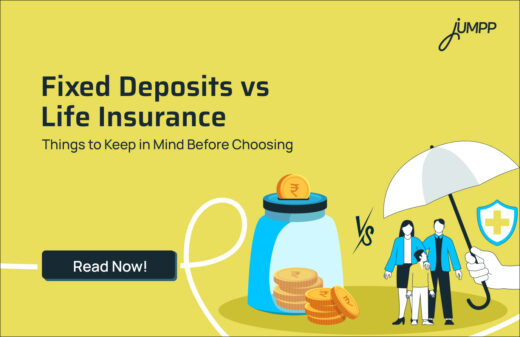Family Floater Health Insurance: Is It the Right Choice for Your Family?

Are you paying separate health insurance premiums for each member of your family? What if one plan could cover everyone under a single sum insured? Family floater health insurance is one such plan that could cover your spouse, children, and sometimes parents under one plan. It makes the health insurance process simple, affordable, and reliable.
Health care costs in India are rising every year. A single hospitalisation can affect your savings if you do not have proper health insurance. While many people buy individual health plans, you need to explore this affordable and practical option called a Family Floater Health Insurance Plan.
Let us understand the health insurance family floater plan in detail!
Family Floater Health Insurance Meaning
A family floater is a health insurance plan that covers multiple family members under a single policy with a shared sum insured. This setup is often more convenient and cost-effective than buying separate policies for each member.
For example, if a family has a ₹5 lakh floater plan and one member needs hospitalisation. Let’s say that the hospital bills cost ₹3 lakh and the insurer pays the claim. This would leave ₹2 lakh coverage for the rest of the family for the remaining policy year.
However, if claims use up the entire sum insured in a year, other members will not have coverage for the rest of the policy term unless the plan includes a “restoration benefit.”
The premium for a family floater is usually calculated based on the age of the eldest family member. This is because their health risk is considered the highest.
Who Can Be Covered Under a Family Floater Plan?
Most insurers in India allow you to cover the following members of your family in your family floater plan-
- Self (policyholder)
- Spouse/ siblings
- Dependent children (usually up to 25 years of age)
- Dependent parents or parents-in-law (depending on the insurer’s terms)
How Family Floater Premium is Calculated
In a family floater health insurance plan, the premium is calculated based on the age of the eldest family member, the total sum insured, and the number of members covered.
Unlike individual plans, where each member pays a separate premium, a floater plan offers shared coverage for everyone at a lower combined cost.
Start growing your wealth today with our easy-to-use investment app!
How Does a Family Floater Health Insurance Plan Work?
A family floater plan has a shared coverage amount. This means that the sum insured you choose acts as a total fund to cover medical expenses for all family members during the policy year. Any member who is involved in the family floater insurance plan can use this amount when needed.
Let us understand the working of a family floater health insurance with an example-
Ankit and Priya, two friends, have opted for family floater health insurance plans for their families.
Here’s how their sum insured works:
Ankit’s Plan:
- Sum Insured is Rs. 12 Lakhs
- The health insurance coverage includes Ankit, his wife, and their two children
Priya’s Plan:
- Sum Insured is Rs. 18 Lakhs
- The family floater health insurance includes her parents, Priya, her spouse, and their single child
Scenario 1: Ankit’s Family Plan in Action
Ankit’s family floater plan has a sum insured of Rs. 12 lakhs.
Here’s how it will help him in the time when health issues arise-
- Let us say that Ankit needs surgery costing Rs. 4 lakh. The plan covers the full expense. This will still leave Rs. 8 lakh for the rest of the family.
- Later, his child is hospitalised for severe fever, which costs him around Rs. 1.5 lakh. The plan covers this too, leaving Rs. 6.5 lakh.
Scenario 2: Priya’s Family Plan – Multiple Claims
Priya’s family floater plan has a sum insured of Rs. 18 lakhs, covering her parents, spouse, and child.
Here is how the family floater health plan shall work-
- Let us say that Priya’s father and spouse meet with a minor accident while travelling. They are hospitalised, and the bill comes to Rs. 5 lakh combined.
- There is a malaria outbreak, and her child later needs treatment for an infection costing Rs. 2 lakh.
The plan covers the total expense of Rs. 7 lakh, leaving Rs. 11 lakh available for the rest of the year.
This example highlights the flexibility of family floater plans.
Benefits of Family Floater Health Insurance
A family floater makes it simple to cover yourself and your entire family under a single plan. This makes it easier to manage than maintaining separate policies for each member.
But with so many option out there, it is natural to wonder – is family floater health insurance worth it?
For a typical married couple with two kids, it often makes more sense to get a family floater with a sum insured of around ₹4 lakh rather than buying four individual plans. When your parents need coverage, a family floater can also be a more affordable choice compared to a senior citizen health plan.
Here are multiple benefits of family floater plan
1. Cost-Effective
Paying one premium for the whole family is usually cheaper than buying separate policies for each member. This makes it budget-friendly.
2. Common Coverage
The sum insured can be used by any family member, depending on who needs it. This flexibility is very useful because not everyone falls sick at the same time.
3. High Coverage at Lower Premiums
You can opt for a higher sum insured at a reasonable cost since it is shared among all members.
4. Cashless Hospitalisation
Most family floater policies provide cashless treatment at network hospitals.
5. Tax Benefits
Premiums paid for family floater health insurance are eligible for tax deductions under Section 80D of the Income Tax Act.
6. Additional Benefits
Many insurers also provide add-ons such as:
- Maternity cover
- Newborn baby cover
- Daycare procedure cover
- Free annual health check-ups
Family Floater Health Insurance: Know the Key Drawbacks Before You Buy
While family floater plans are cost-effective and convenient, they are not the best fit for every family.
1. Coverage Depletion
A major risk is that a single large claim by one member can exhaust the entire sum insured. If you use a major amount for one individual, it may not leave a decent amount for others who are part of the family floater health insurance.
Families with a senior member or someone with pre-existing conditions may find a standard floater insufficient. This is because frequent medical needs can quickly use up the shared coverage.
2. Higher Premiums for Older Members
Premiums are calculated based on the age of the oldest member. As this person ages, the premium rises for the whole family. If you are planning to include your senior parents, it can make the plan expensive and increase the risk of depleting the sum insured.
3. Limited Eligibility and Renewability
Most floaters cover only immediate family. This means you can only include your spouse and children. Dependents are usually covered only until a certain age, typically 25, after which they must buy individual plans, and their waiting periods restart.
Some older plans have maximum renewability ages tied to the oldest member, though many modern plans now offer lifelong renewability.
4. Affects No Claim Bonus
Filing a claim by any member affects the No-Claim Bonus (NCB) for the entire family.
If the primary insured leaves or passes away, remaining members may lose coverage or need to buy a new policy at higher premiums. Waiting periods still apply for pre-existing conditions, specific illnesses, or maternity benefits. This means that claims during this time are not covered.
Considering a switch to a better plan?
Learn how health insurance portability works and make the move seamlessly.
Family Floater Health Insurance: 5 Key Points to Check Before You Buy
- Most insurers now offer lifelong renewability after IRDA guidelines.
- You should check for limits on specific expenses. For example, even if the total sum insured is ₹4 lakh, there might be ₹40,000 for medicines or ₹50,000 for pre- and post-hospitalisation.
- Many insurers now offer 2- or 3-year terms instead of just annual policies.
- If the sum insured is used up before the policy ends, this feature refills it, which is useful in family floaters.
- You should look for extras like free health check-ups, 24×7 medical advice, discounts at pharmacies, fitness clubs, or concierge services.
Conclusion
A Family Floater Health Insurance Plan is a simple and affordable way to secure the health of your loved ones.
In today’s world, where healthcare costs are rising, a family floater plan lets you cover your entire family under a single policy. It offers flexible coverage, lower costs, and tax benefits.
For young and healthy families, it can save money while providing comfort. However, it’s important to choose carefully. You should do your research before selecting any health floater plan.
Family Floater Health Insurance Meaning- FAQs
A family floater health insurance is a single policy that covers all family members under one sum insured, making it cost-effective compared to buying separate policies.
The main drawback is shared coverage. If multiple claims occur in a year, later claims may have lower coverage, and parents are usually not included.
Family floater health insurance is better for young families, while individual health insurance suits those with older parents or higher personal health risks.
Family floater is a single plan for your family, while group health insurance is offered by employers to employees and sometimes covers dependents.
Yes, you can switch health insurance through portability, ensuring you keep benefits like no-claim bonus and waiting periods.
Health insurance portability may lead to higher premiums, loss of loyalty benefits, and fresh waiting periods if the transfer is not managed correctly.
You can include yourself, your spouse, dependent children (usually up to 25 years), and in many cases, parents or parents-in-law.
Yes. There’s a 30-day initial waiting period, 2–4 years for pre-existing conditions, and 1–2 years for specific illnesses.
Non-dependent children, siblings, or extended family members usually aren’t covered unless allowed by the insurer.
There’s no one-size-fits-all. You must compare features based on your requirements and choose accordingly.






